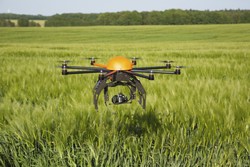New horizons for unmanned aerial vehicles
European aerospace companies trail behind their United States peers in the development of new applications. A handful of companies in Asia are also investing in next-generation UAVs on their own. These UAVs are part of a global competition to gain a leading position in a fast-growing market. Most companies, however, are researching independently to reach the highest level of UAV autonomy. The EU-funded UECIMUAVS (USA and Europe cooperation in mini UAVs) project was launched to overcome fragmentation of research efforts, creating close, long-term links among three leading research centres from Europe and the United States. By bringing their complementary expertise together, UECIMUAVS extended the scope of operations for UAVs through vision-based navigation. To provide real-time guidance, researchers developed new algorithms for cameras and exteroceptive sensors, exploiting their measurements to better determine heading and orientation. The new system improves visual performance by enabling the aircraft to learn directions itself. Such self-learning ability allows the UECIMUAVS system to keep a record of what it 'sees', update its reference database continuously and adapt to changing environments. In flight tests with the new system based on deep-learning techniques, the UAV estimated its heading much more accurately than other navigation systems. The system for vision-based navigation to a target was also integrated with a new landing algorithm. The aircraft updates its landing target parameters and uses an on-board behaviour-based controller to follow the path to the landing site. More specifically, project achievements included a new general frame software structure dubbed Aerostack that helps develop new software modules for UAVs and enables end users to define complex missions. Another key project outcome was a set of visual-based pose estimation tools that can be integrated with other usual sensors such as GPS and altimeters to improve positioning, autonomy and performance. These advances benefit different kinds of UAVs, from multi-rotors and helicopters to fixed-wing planes. Several sectors can benefit from the new technology, such as precision agriculture, industrial inspection, firefighting and border control. At the International Micro Air Vehicle Conference and Flight Competition held in 2013 in Toulouse, France, the UECIMUAVS system was awarded the second prize in the indoor dynamics challenge and first prize in the indoor autonomy challenge. The prizes highlight the innovation in the field and the success of the project.







